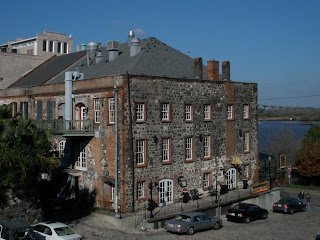.JPG)
.JPG)
The climb started below the snow line at 1520m and the 1327m ascent took 6 hours to reach the summit at 2847m. The hard plastic boots provided by the alpine guides gave me bruises on my lower legs early on and soon it was painful with every step. I had to slow down considerably and was about 20 minutes behind the others.
When my leg was hurting so much and the climb seemed to have no end, I asked the guide how much longer it would take. 50 minutes, he said. I decided not to check my watch any more and not stopping until I got to the top. After what felt like 2 days, I met the fast climbers coming down. I resisted but finally asked, “How much longer until the summit?” A Dutch girl said without blinking an eye, “Five minutes.” It was like the atropine I needed to jump start my heart. With a new battery, I was marching up the icy slope like the Energizer Bunny. Fifteen minutes later, my guide turned around, shook my hand, and said, “Congratulations, welcome to the summit”. On the way back, I thanked the Dutch girl for lying to me. “If you had told me six minutes instead of five, I would have turned around and .JPG)
Five and a half hours of climbing earned me less than 10 minutes at the summit. Getting too close the active volcano’s smoking crater had proven to be hazardous. A month before my climb a woman fell into the crater, landed on a rock outcrop, survived the fall, but was soon choked to death by the sulfur gas. With wind speed topping 20 miles an hour, the acidic gas was burning my eyes, nose and throat even when I was a few meters upwind from the crater. That was no place for picnic.
Coming down required bending the ankle forward and therefore was even more painful and awkward. To my delight, more than half of the way coming down, where the snow was packed, we .JPG)
This is an extract from my travel journal. To see more pictures of my travels in Chile, view my Chile Album.








.JPG)
.JPG)
.JPG)
.JPG)
.JPG)